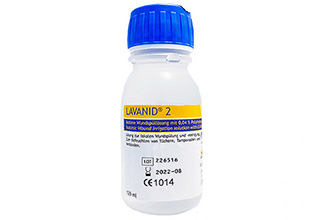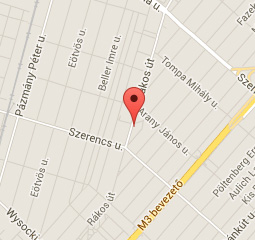
Of which
10 were open- bitten, lacerated injuries
4 were torn, - cut, - lacerated injuries
2 were burns
2 were bullet wounds
2 were deep abrasions
1 was superficial purulent dermatitis/fold dermatitis
According to the previous protocol, in case of necessary omission of suture union of the wound, to support secondary wound healing, in addition to administering antibiotics and NSAIDs during the first week, in its first phase (cleansing), the application of a sugar dressing every 6 hours, with Salsol solution lavage, with betadine antiseptic-cleansing tamponade of the wound area. To support the second phase (formation of granulation tissue), daily Salsol lavage, possibly use of Kék Lukács (Blue Luke) ointment, especially for uncovered bony areas, lavage of the wound area with betadine, bandaging, in the third phase (epithelisation), 2-3 daily Salsol lavage, bandaging. The average wound healing time is about 16 days.
For 1 month, the above-mentioned patients were treated with Lavanid solution instead of Salsol lavage and Lavanid gel for dressing. Betadine was used for wound care only in the first phase. Kék Lukács (Blue Luke) ointment was not used.
Results
The average wound healing time was about 14 days
In three patients in the first phase of wound healing (bitten-lacerated group), the amount of wound exudate increased significantly in the first 2-3 days and then gradually decreased over a few days. In the other patients, no difference in wound healing was seen compared to previous treatments, with wound healing perhaps slightly faster with Lavanid solution and gel treatment. Two patients required drain implantation and 3 patients underwent deferred suture fixation.
Our experiences
We found that packaging the solution in a rubber stoppered bottle was a good solution, as sterility could be maintained in the bottle for a longer period of time.
We found the gel to be a little easily flowing, with reduced viscosity, but it was excellent for soaking the wound covering swab layer.
Overall, Lavanid solution and gel is effective and well-suited for veterinary wound management, with treatment results at least equivalent to those of the previous protocol we used. In one case we tried to treat superficial purulent dermatitis with Lavanid wound dressing solution lavage every 12 hours. The result was very surprising, on the second day the discharge was reduced to a fraction of the baseline level, and on the 5th and 6th day the lesion healed without antibiotics.
The different pack sizes allow for both the practicalities of clinical use and the demands of pharmacy sales, so that we can provide the patient with the amount of solution and gel needed for the bandage treatment, if they are partly replaced at home on the animal.
Veterinary colleagues may be recommended to use Lavanid wound treatment solution and gel.
Budapest, 17 April 2021
Ügyeleti jellegű nyitvatartás: hétköznap 20.00-22.00 óráig, szombaton és vasárnap (ünnepnapokon) 9-20.00 óráig.
UH, MRI, CT, endoszkópos vizsgálatra, neurológiai , ortopédiai, egzotikus szakrendelésre kérjen telefonon időpontot!


